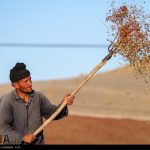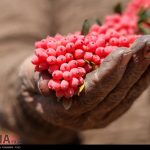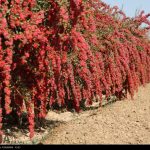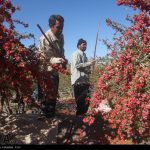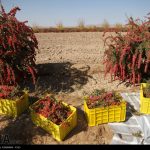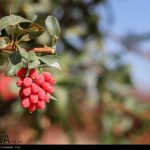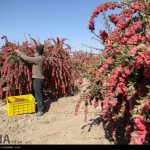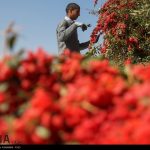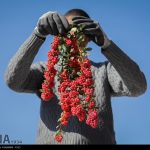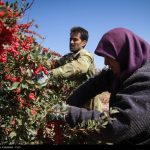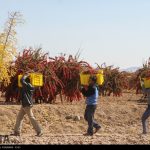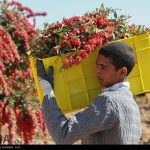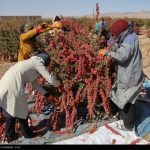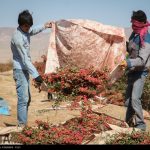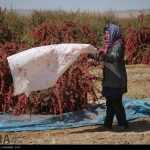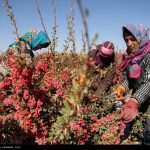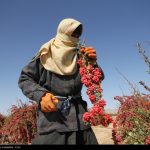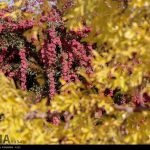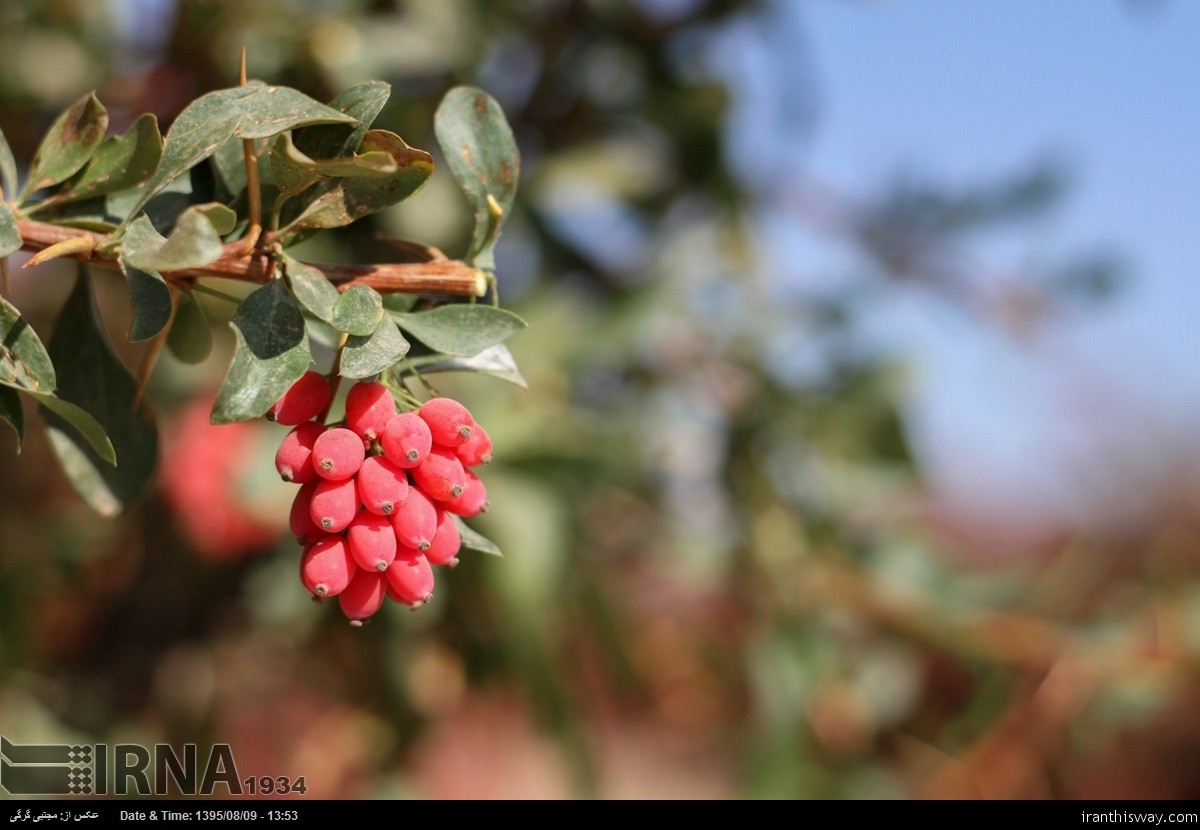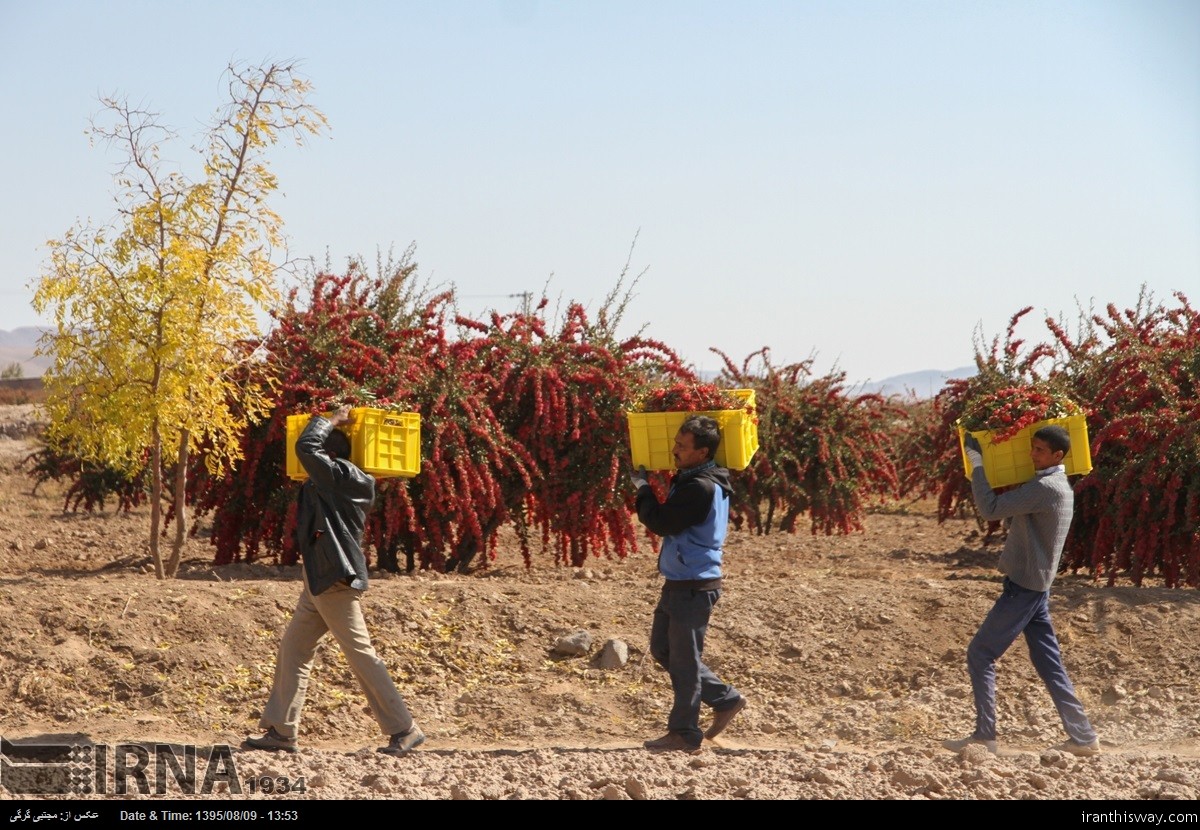The photo shows barberry harvesting in South Khorasan province.
Iran Barberry
Barberry can grow to be a fairly large shrub. The thorny shoots are found growing wild in Alborz mountains amplitudes and other parts of Iran. Ruby is the name given to a seedless barberry which is cultivated in Qaenat and emerges from an erect shrub of 1.5-2 meters tall. The leaves are small oval which are borne in clusters besides thorns. Its yellow beautiful and attractive flowers include 6 sepals, 6 petals and 6 filaments and its pistil consists of a filament terminating in a short style. Flowering occurs from mid April to May. The fruit is an oblong red berry 7-10mm long and 3mm broad, ripening in annual branches and resists water shortage, drought and salinity. The plant is south Khorasan climate friendly-product.
Chemical Composition
The plant leaves, bark and wood contain Berberine which is highly toxic. The bark contains 1.7 Berberine while leaves and wood contain lower concentration of this alkaloid. Traces of another alkaloid called oxyacanthine along with an essence have also been found in barberry flower. Germ and root of the plant contain a type of sugar, resin materials, pectin and mucilage. Root barks besides oxyacanthine contain other alkaloids called 2-berbamine palmatine, Columbamine vegate rosisin.
Medicinal Uses
For many years barberry has been in domestic use as a medicine. Because of its organic acids, the plant is a remedy that reduces blood bile and ejects bile out of the liver. Also it reduces Polydipsia. Barberry mixed with warm nature remedies like cinnamon and honey leads to liver strength and treats Polydipsia and diarrhea caused by liver weakness and gastric problems. It is useful in vomiting and its mixture with appropriate medicine results in gastric ulcers healing process. It is a treatment for appetite loss and for cold-natured people and those suffering from flatulency it is suggested to be consumed in conjunction with sweet foods like honey and Nabat. The plant has a reputation for increasing the longevity. Life span is significantly higher in the plants irrigated with barberry extracts compared with those irrigated with alone water. The fruit is febrifugal and contains Vit C. It increases the body’s defense by boosting immunity against diseases especially infectious ones and common cold. Barberry is blood purifier, affects and increases urine production followed by urine excretion. It reduces itching and as a very strong decoction is employed as an application to pleasant odors exhaled while breathing. It has high contents of Vitamin C compared to sour lemon. One of the main roles of the fruit is coincidence of vessels, especially womb vessels. This is also useful for those suffering from choleystitis and cholelithiasis and other bile duct disorders.
Cultivation
Barberry is planted in pits at a depth of 0.5m in middle of autumn up to end of the winter and immediately after planting irrigation is done. The best time to prune is from the 2nd year in autumn. At this time dead and shriveled branches should be removed. This tree requires lower amount of water and is compatible with salty soil. The stalk of the tree is placed in a pit at a depth of 30cm to allow air circulation and water penetration. Barberry is harvested and available in the middle of September up to end of October. Rains in autumn hasten harvest and any lack of rain delays harvesting result in a sweeter fruit. They are traditionally harvested by manual methods and are always performed by cutting and pruning the branches to facilitate drying. Properly trained and pruned trees will yield high quality fruit called “ Poffaki or Bulb”. To prepare this type cutting the plant is made in branch end and the same is placed on trays in special warehouses for dehydration. Manually harvested crop left to dry on the field often directly affects product quality.
More info

